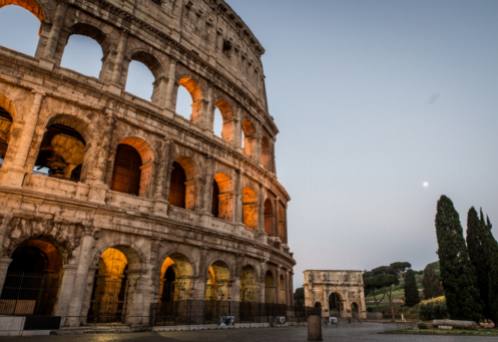Nestled in the heart of Rome, the Trevi Fountain stands as a magnificent masterpiece of Baroque architecture. With its intricate detailing and grandiose scale, it has captivated visitors from around the world for centuries. The fountain holds a special place in the hearts of both locals and tourists, not only for its stunning beauty but also for the rich legends and myths that surround it. Despite facing numerous challenges over the years, the Trevi Fountain has endured and continues to be a symbol of cultural significance in Italy.

Architectural Features of the Trevi Fountain
The Trevi Fountain, located in the heart of Rome, is a stunning example of Baroque architecture. Designed by Italian architect Nicola Salvi and completed in 1762, the fountain features intricate marble sculptures and reliefs that depict various mythological scenes. The central figure of the fountain is Oceanus, the god of the sea, who is riding a chariot pulled by seahorses. The overall design of the fountain is a harmonious blend of classical and Baroque elements, with elaborate details and dynamic movement that capture the spirit of the era. The Trevi Fountain is not only a masterpiece of architecture, but also a symbol of the grandeur and beauty of Rome.
Legends and Myths Surrounding the Trevi Fountain
The Trevi Fountain in Rome is not only known for its stunning Baroque architecture, but also for the multitude of legends and myths that surround it. One of the most popular legends is that if you throw a coin over your left shoulder into the fountain, you will ensure your return to Rome. It is said that throwing a second coin will lead to a new romance, and a third coin will lead to marriage. As a result, the fountain collects thousands of euros each day, which are used to support various charities in Rome. Another myth surrounding the Trevi Fountain is the story of a young woman who is transformed into a mermaid after falling in love with a Roman soldier. The intricate sculptures and reliefs on the fountain depict this and other mythical tales, adding to the magical atmosphere of this iconic landmark.
Restoration Efforts and Challenges of the Trevi Fountain
The fountain, which dates back to the 18th century, has faced a number of challenges over the centuries, including damage caused by pollution, vandalism, and the effects of time.
One of the most significant restoration projects in recent years took place in 2014, when the Trevi Fountain underwent a comprehensive restoration funded by the Italian fashion house Fendi. The restoration included cleaning the fountain's intricate sculptures, repairing damage caused by pollution, and installing a new lighting system to highlight the fountain's beauty at night.
Despite these restoration efforts, the Trevi Fountain continues to face challenges in maintaining its iconic status. Pollution from the surrounding city has taken its toll on the fountain's delicate marble sculptures, and the constant flow of tourists has caused wear and tear on the fountain's structure.
In order to address these challenges, ongoing maintenance and restoration efforts are necessary to ensure that the Trevi Fountain remains a shining example of Baroque art for future generations to enjoy. By continuing to invest in the preservation of this architectural masterpiece, we can ensure that the Trevi Fountain will continue to enchant visitors from around the world for years to come.
Cultural Significance of the Trevi Fountain
The Trevi Fountain holds immense cultural significance in the city of Rome and beyond. It serves as a symbol of the city's rich history and artistic heritage, drawing millions of visitors each year to marvel at its beauty and grandeur. The fountain has also been featured in numerous films, further cementing its place in popular culture. Additionally, tossing a coin into the fountain is believed to bring good luck and ensure a return visit to Rome, making it a beloved tradition for tourists and locals alike. The Trevi Fountain stands as a testament to the artistic achievements of the Baroque period and continues to captivate the hearts and minds of all who encounter it.
